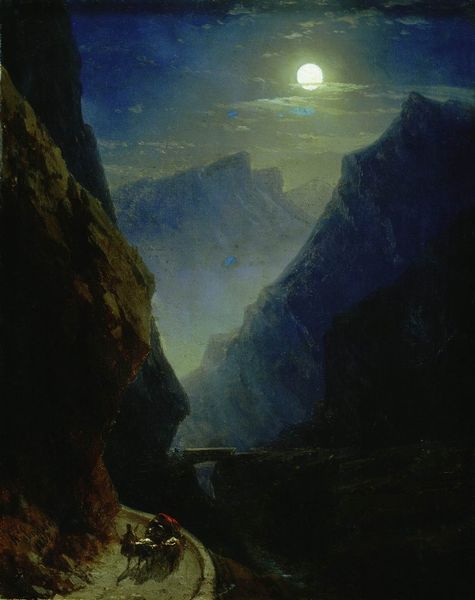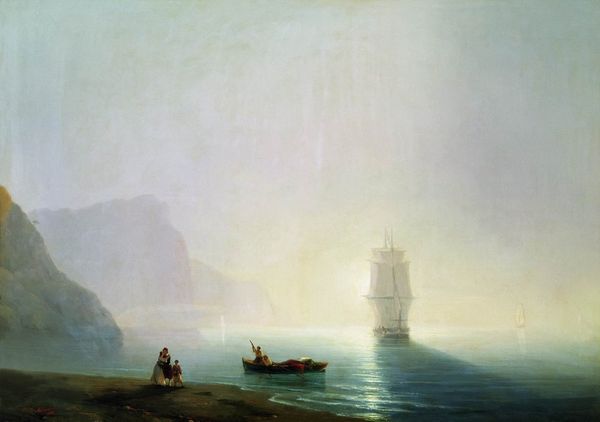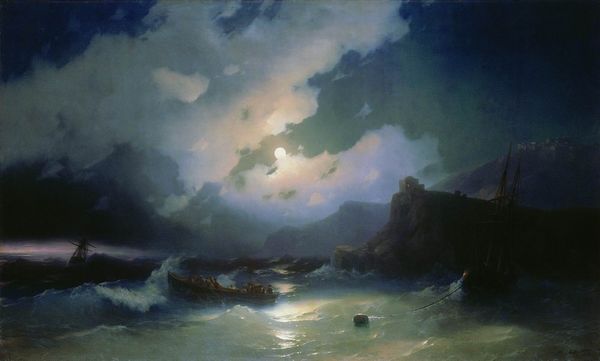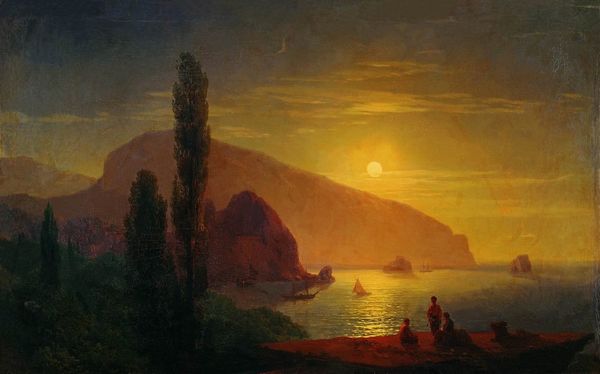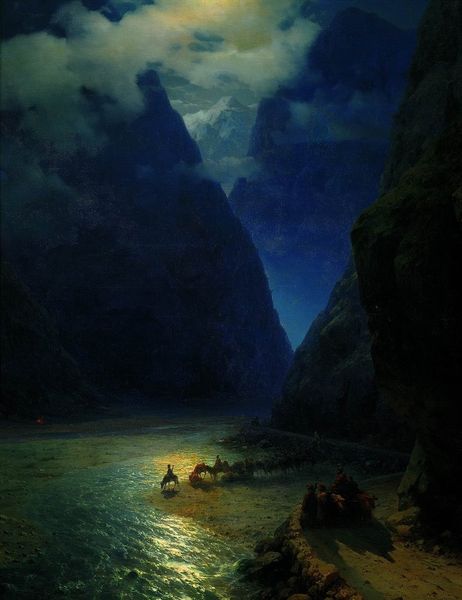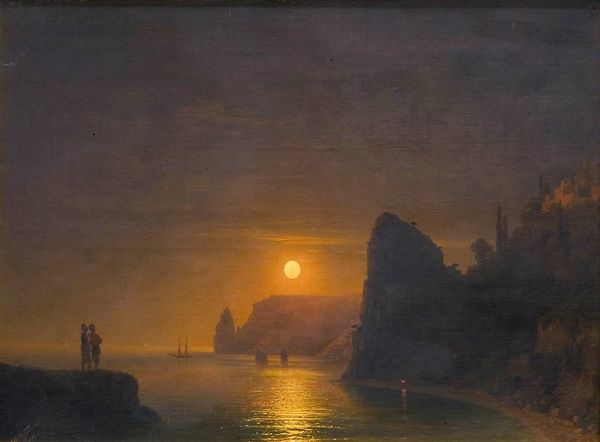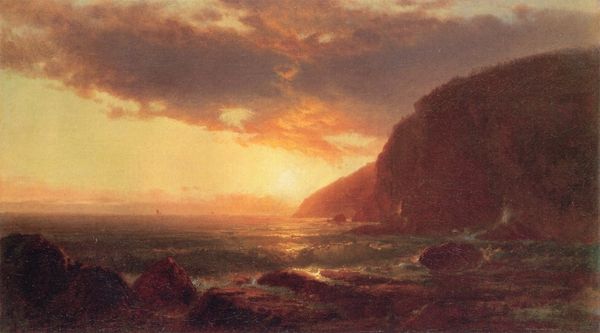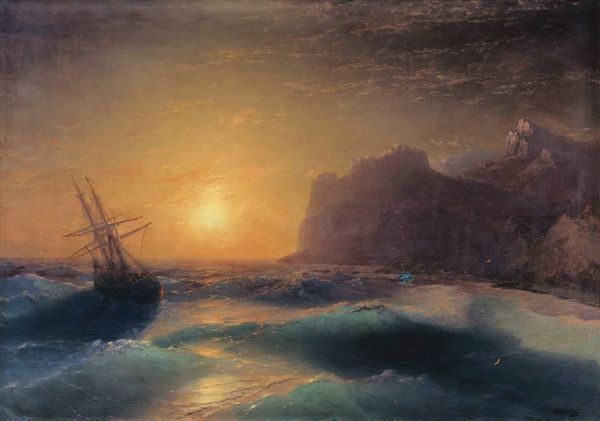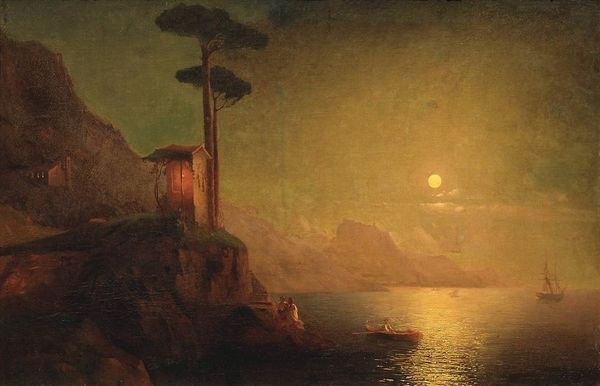
Dimensions: 190 x 156 cm
Copyright: Public domain
Editor: Here we have Aivazovsky's "Pushkin in Gurzuf" from 1880, an oil painting depicting the poet at night. The vastness of the landscape really emphasizes Pushkin’s solitary figure. What strikes you most about this piece? Curator: Beyond the romantic landscape, I see a powerful commentary on Russian identity and artistic legacy. Consider Aivazovsky himself – a prominent Armenian artist painting a pivotal figure in Russian literature against the backdrop of Crimea. How do we unpack this intersectionality of identities, power dynamics, and colonial narratives within the image? Editor: So, it's not just a portrait, but a statement about cultural identity? Curator: Precisely. Think about Pushkin's complex relationship with the Tsarist regime and his own African heritage. Aivazovsky places him within a sublime, almost spiritual landscape, but this could also be read as an appropriation of Crimean land. Who gets to define Russian culture, and at what cost? Notice how the moon illuminates both Pushkin and the encroaching waves. It's a liminal space. What tensions do you observe within this space? Editor: I guess I hadn't considered it beyond the surface level depiction of a great writer in nature. The subtle visual cues seem to hint at deeper political undertones, specifically about who can even access and claim belonging to a nation. Curator: Exactly. Aivazovsky gives us a visually stunning piece, but through a decolonial lens, it encourages a critical examination of national narratives, artistic representation, and historical context. Editor: I never thought of landscape painting as being able to embody these sorts of struggles. I'll definitely look at art with a new, more critical eye. Curator: It's all about peeling back the layers, and art gives us a place to ask "why".
Comments
No comments
Be the first to comment and join the conversation on the ultimate creative platform.

